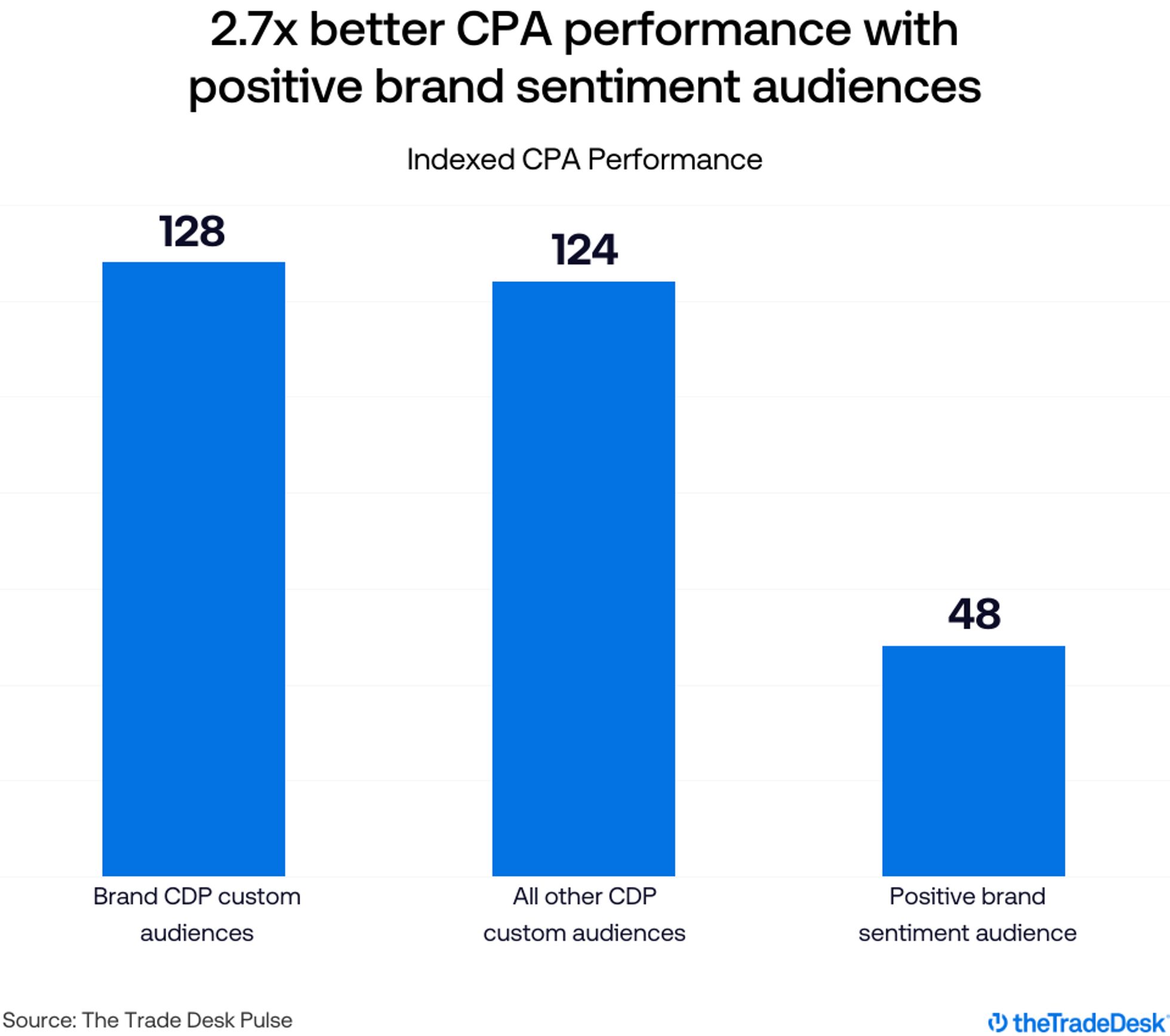Insights Publishers
The publisher’s guide to premium

Recruiting fraud is a growing issue for many companies.
The Trade Desk takes this issue seriously and is taking steps to address it.
Share:
Activities like planning travel, looking for recipes, reading product reviews — you name it —is happening across the open internet. Consumers now spend 61 percent of their online time there, compared to 39 percent within walled gardens.1
All this open internet activity provides advertisers with ample information they can use to inform their campaign strategies. The Trade Desk Pulse tool aggregates sentiment data from across the open internet into one easy-to-understand report you can use to inform your programmatic campaigns — and assess your brand’s reputation.
Here’s how.
Imagine what you can learn about your brand by gleaning insights from across the open internet.
The Trade Desk Pulse tool works by analyzing a wide range of text-based content like news articles, blogs, product reviews, and more. It determines the sentiment of on-site text through a “sentiment analysis,” the process of identifying the emotional tone of a piece of text. It’s a sophisticated machine learning model that can also identify entities like people, topics, and brands mentioned within that content and gauge positive or negative associations.
The tool can also assess engagement with industry-specific content and chart changes over time. In a generated report, The Trade Desk Pulse provides a sentiment score ranging from 0 (very negative) to 99 (very positive), depending on the specific sentiment associated with a brand or keyword.
Want to better understand trends associated with your industry or product category? Consider this example: Golf enthusiasts typically conduct extensive research prior to booking a resort through travel websites. They might read up on golf equipment, compare resorts, or research upcoming tournaments.
Using The Trade Desk Pulse tool, you can see that people consumed more golf-related content right before a holiday weekend approached. This represents an opportunity for brands in categories like airline travel, hotel accommodation, and sporting gear to connect with golfers when they are in the mindset to book.2

Trends analysis can help you time your current or future campaign strategies appropriately. For instance, in Q1 2024, we saw a 12% increase in consumption of article content about electric vehicles and a 62% increase in consumption of article content about weight loss.3 It’s easy to see how auto, health, and CPG advertisers could act on insights such as these.
The Trade Desk Pulse tool really shines when it comes to helping you identify and act on the sentiment associated with content. In the below chart, The Trade Desk Pulse tool highlights that in April, sentiment was more positive for tequila than for other spirits — useful intelligence that beverage industry marketers can use to inform their campaign creative.

Of course, you may already use a range of social-listening tools and brand health trackers to analyze consumer sentiment around your brand, product, or category. The Trade Desk Pulse tool builds on those capabilities by enabling you to target campaigns toward positive or negative sentiment.
For example, you could build an audience cluster of people who had read positive reviews about a specific brand to reinforce the brand’s messaging. You could also launch a conquest campaign to persuade audiences who have recently seen negative reviews of a competitor brand. Another use case might be to focus on geo-based targeting in regions where sentiment is higher or lower.
Case study: An automotive advertiser that targeted its own positive-sentiment audiences saw a 2.7x more efficient CPA than the other custom audiences they used during the same period.4

These strategies can potentially drive significant performance improvements for your campaigns.
Now that you’ve learned how The Trade Desk Pulse tool can help you assess your brand reputation and identify content trends, it’s time to put those insights to work. Speak with your account rep today to discover how these insights can inform your campaigns with The Trade Desk.
The Trade Desk Pulse tool is currently only available to managed service clients.
Sources:
1. GlobalWebIndex (GWI Core): FY 2014, 2017, 2020 and 2023. Market: USA; Adults 18+ Avg Daily Time Spent by Media.
2. The Trade Desk Pulse, May 2024.
3. The Trade Desk Pulse, Q1 2024.
4. The Trade Desk data, Feb. 2024 to March 2024.
Insights Publishers

Resources Retail Media

Insights Data and measurement
